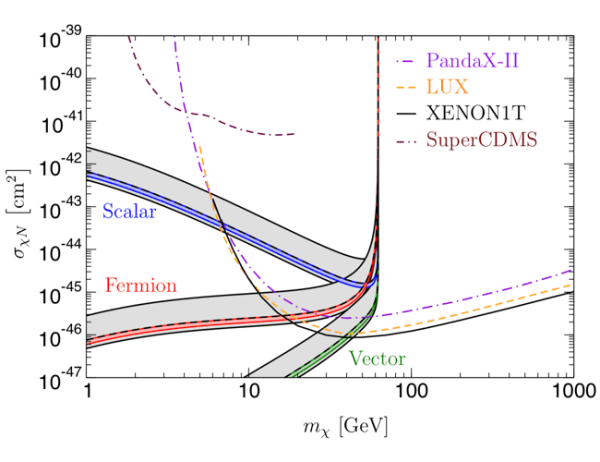Beyond-the-Standard-Model Physics with Nucleons and Nuclei

Note to applicants: This is a "hybrid" program, meaning there will be a combination of virtual and in-person participants. In the COMMENTS section of the Application Form, please write [In-person], [Virtual], or [Either] to reflect your preferred mode of attendance. Please be aware that all in-person participants must show proof of vaccination against COVID-19 upon arrival to the INT.
Disclaimer: Please be aware that due to ongoing concerns regarding the COVID-19 pandemic, this program may be changed from a hybrid program to online only.
In the next decade, an impressive experimental program will test the limits of the Standard Model (SM) and address the most pressing open questions in particle physics, from the nature of dark matter to the origin of neutrino masses, from the dominance of matter over anti-matter in the universe to the absence of strong CP violation and the large hierarchy between the electroweak and the Planck scale. Searches for beyond-the-SM (BSM) physics via low-energy precision experiments will play a crucial role in answering these questions, by looking, in particular, for deviations from symmetry patterns of the SM. Prominent examples involving nuclear systems are searches for lepton number violation via neutrinoless double beta decay, probes of CP violation via EDM experiments with nucleons, nuclei, and diamagnetic atoms, and DM direct detection. Other experiments look for proton decay, neutron-antineutron oscillations, non-standard charge-current interactions in neutron and nuclear β decays, CPT violation, neutrino-scattering experiments, and the list goes on.
These experiments are complementary to high-energy experiments such as the LHC or DUNE, and share the common feature of probing high-energy physics by using nuclear targets. Their interpretation involves physics on a large range of scales, from the eV and MeV scales of atomic and nuclear physics, to the GeV scale where hadronization takes place, all the way to the (multi-)TeV scale where BSM physics potentially originates. In the present unfortunate situation of no hints for any BSM signals at the LHC, low-energy precision searches, where significant improvements in sensitivity can be reached in relatively short time with relatively low costs, can take an even more prominent place in the future of particle physics.
Background
A signal in many of the aforementioned experiments would be an unambiguous sign of BSM physics. To interpret such a signal (or limits) and to discriminate between different BSM models, we require solid theoretical control over a large range of energy scales. Ideally one has
-
A model-independent link to other searches for BSM physics such as collider and flavor observables.
-
A smooth transition between quark-level and hadronic degrees of freedom, using an interplay of lattice QCD and effective field theory.
-
A consistent power counting to determine the hierarchy of contributions to nuclear processes such that nuclear wave functions and external currents can be calculated in a systematic expansion.
-
Sufficient control over nuclear theory once the power counting has determined the relevant interactions. For very light nuclei the scattering and bound-state equations can be solved essentially exactly, while for heavier (but still relatively light) systems ab initio methods have made great progress. Heavier systems that are often used in experiments, require nuclear many-body methods.
Program Format
This one-week program is an extension of the more comprehensive 3-week program that took place in the summer of 2020. We aim for a light schedule of talks that are focused on searches of EDMs, neutrinoless double-beta decay and BSM in precision beta decay, with emphasis on the interplay between lattice, EFT, and ab initio calculations to better understand the hadronic, nuclear, and electroweak matrix elements involved in the interpretation of the broad experimental landscape.
